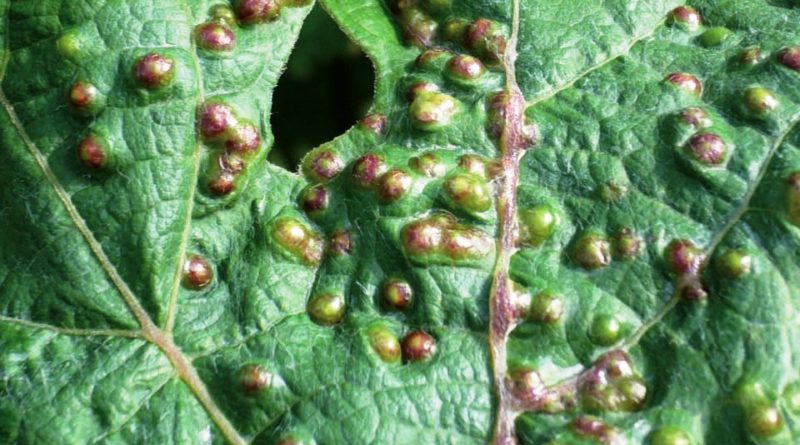Dichelomyia oenophila
Dichelomyia oenophila
The cecidomy of the vine (Dichelomyia oenophila V. Haimhoff) is a small insect belonging to the Cecidomyiidae family.
Systematic –
From a systematic point of view, it belongs to the Eukaryota Domain, Animalia Kingdom, Eumetazoa Sub-Kingdom, Bilateria Branch, Phylum Arthropoda, Subphylum Tracheata, Hexapoda Superclass, Insecta Class, Pterygota Subclass, Endopterygota Cohort, Oligoneoptera Superorder, Order Suborder, Order Bibionomorpha, Sciaroidea superfamily, Cecidomyiidae family and therefore to the genus Dichelomyia and to the species D. oenophila.
Geographical Distribution and Habitat –
The cecidomy of the vine is an insect that lives at the expense of the vine and which is widespread especially in the regions of northern Italy.
Morphology –
The adults of the Dichelomyia oenophila have small dimensions, with the adults oscillating between 1 and 2 mm and with a color between gray and reddish.
The females are recognized by the presence of the styliform ovipositor, while the larvae have a yellowish color and are apode.
Aptitude and biological cycle –
The Cecidomia della Vite overwinters in the ground at the larval stage.
The appearance of adults occurs, starting from the month of May, in the period between spring and summer.
The females, having reached maturity, lay in the lower lamina of the leaves.
The wintering larvae will come out of the eggs, so the insect makes only one generation per year.
The presence of these insects causes the formation of convex galls which occurs both on the lower and upper page of the leaves.
These galls on the upper page have a smooth surface while in the lower one it has a thick hair, furthermore, after the larva exits, the surface darkens and dries, also at the moment when the adult flickers, a rather evident central hole remains.
The damage is due to the decrease in photosynthesizing tissue of the leaves and deformation of the leaf itself, in addition if the galls are on the leaf veins, deformation of the leaf itself can also occur. However, these deformations cause a reduction of the leaf tissue suitable for photosynthesis.
In the diagnosis of this insect, care must be taken not to confuse these galls with those caused by phylloxera.
Ecological role –
The Cecidomia della Vite is a diptera which, when the larvae develop, on both sides of the leaf, as mentioned, causes the formation of a convex leaf surface.
However, in many cases the damage caused by Dichelomyia oenophila is very slight and any type of intervention to prevent it is therefore avoidable, as the chemical fight against this insect is not always justifiable, due to the small amount of damage caused.
Only in the case of actual need for a specific intervention can endotherapeutic insecticides be used which, moreover, are already indicated for other phytophages of the Vine, such as the Buzzers and the Thrips.
Be careful, however, because the use of these insecticides interferes with the useful entomofauna, so they must be carefully evaluated, case by case, and only if the hypothesis of economic damage is concrete.
Guido Bissanti
Sources
– Wikipedia, the free encyclopedia.
– Russo G., 1976. Agricultural entomology. Special Part. Liguori Editore, Naples.
– Tremblay E., 1997. Applied entomology. Liguori Editore, Naples.

